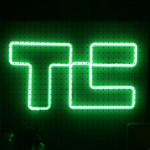Republican Tennessee Congressman John Rose has introduced a new bill called the Bridge Digital Assets Act to create a CFTC-SEC joint digital asset advisory committee. The committee will consist of 20 private sector members from the digital asset industry, including issuers, academic researchers, and users. The purpose of this proposed legislation is to harmonize crypto policy regulation between the US Securities and Exchange Commission (SEC) and the Commodity Futures Trading Commission (CFTC). The bill aims to streamline digital asset regulations and provide industry advice to both agencies on their rules, regulations, and policies related to digital assets.
The introduction of the Bridge Digital Assets Act comes as an effort to allow digital assets to thrive in the US by moving away from a heavy-handed, regulation-by-enforcement approach that has proven to be ineffective. Congressman John Rose emphasizes the need for cooperation between the government and private sector partners to create a framework for the regulation of digital assets. He believes that the current regulatory approach only pushes investment opportunities in digital assets overseas and hinders innovation in the US. The joint advisory committee on digital assets aims to address these issues and provide a path towards success in the regulatory landscape.
The uncertain regulatory environment surrounding cryptocurrencies has made it less attractive for investors in recent times. The SEC and CFTC have often clashed over the classification of digital assets, with one treating them as securities while the other views them as commodities. The Bridge Digital Assets Act intends to bring clarity and consistency to crypto regulation, addressing the regulatory gaps that currently exist. The joint committee will assess the potential for digital assets to improve financial market infrastructure efficiency, including customer protections, transparency, reduced transaction costs, and increased access to financial services.
In May, the US House of Representatives passed a bipartisan bill known as FIT21, which aimed to share regulatory powers between the SEC and CFTC. However, SEC Chair Gary Gensler criticized the bill, citing risks to investors. The Bridge Digital Assets Act seeks to build upon this effort by establishing a joint committee to provide recommendations and findings to both agencies at least twice a year. This collaboration between the SEC and CFTC through a joint advisory committee could lead to a more cohesive regulatory approach to digital assets in the US, benefiting both investors and the industry as a whole.
The proposed legislation, introduced by Congressman John Rose, has garnered attention as a step towards addressing the challenges faced by the digital asset industry in navigating regulatory waters. By bringing together industry experts, academic researchers, and users, the joint committee aims to bridge the gap between the SEC and CFTC, providing valuable insights and recommendations for the regulation of digital assets. The Bridge Digital Assets Act could potentially pave the way for greater innovation and investment in the digital asset space, positioning the US as a leader in the growing industry. Supporters of the bill believe that it offers a proactive approach to crypto regulation, promoting collaboration and transparency in a rapidly evolving market.
In conclusion, the Bridge Digital Assets Act introduced by Congressman John Rose represents a significant step towards enhancing the regulatory environment for digital assets in the US. By establishing a joint advisory committee between the SEC and CFTC, the bill seeks to address regulatory gaps, promote innovation, and create a more cohesive approach to crypto policy. With the potential to provide a framework for collaboration between the government and private sector stakeholders, the proposed legislation aims to pave the way for a thriving digital asset industry in the United States. As the regulatory landscape continues to evolve, initiatives like the Bridge Digital Assets Act play a crucial role in shaping the future of digital assets and blockchain technology.









